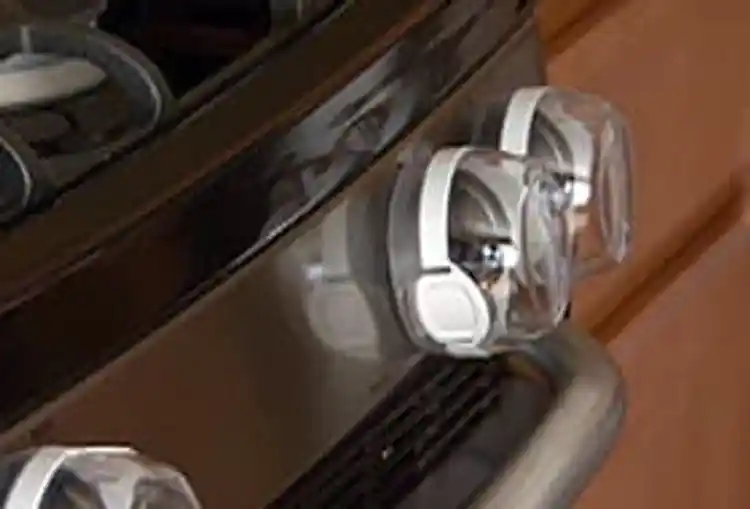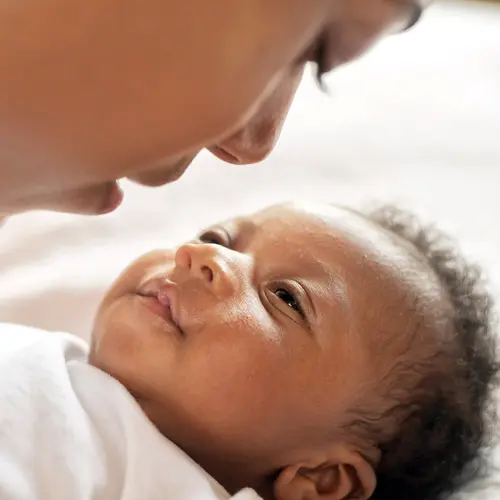Keeping Baby Safe At Home

Hide Video Transcript
Video Transcript
Ellie
You've chosen all the furniture, the décor and even splurged on a few extras for baby's room. Melissa
But have you done all you can in your home to keep baby safe? Both
Hi we're Ellie and Melissa, the Baby Planners. From baby monitors to toilet locks, we've got your home safety checklist, step by step. Melissa
Start with the basics. Make sure you have smoke alarms and carbon monoxide detectors near every separate sleeping area of the home. and don't forget a fire extinguisher. Ellie
Start baby proofing the house before baby arrives. Move breakables to top shelves, shorten drapery, and tie up all window blind and drapery cords that could pose a strangulation risk. Melissa
Put window guards, preferably with emergency release devices, on all windows above the first floor. Did you know baby can fall from a window that's open as little as four inches? Melissa
Install child resistant outlet covers. Stay away from simple plugs that baby can remove. Bundle and tie excess electrical cords. Ellie
Use guards on sharp tables corners, fireplace screens, and TV and DVD player guards. Melissa
Use hardware mounted safety gates at the top and bottom of stairs and across entryways to prevent falls. Ellie
Make sure all railings are secure and use mesh or plastic barriers to cover openings that are more than 3 and a half inches apart. Melissa
And anchor all heavy furniture securely to the wall. Ellie
There's no need to stand over baby's crib if you've got a monitor on duty. Melissa
Audio versions are the most common. Ellie
Choose a portable model so you can take the receiver with you from room to room. Melissa
Video versions, while obviously more expensive, allow you to see if baby is really asleep. Ellie
Some come with night vision, or second camera capability. Melissa
And some even send pictures and audio to your mobile phone! Look for the following features: Mother
Jack, I'll be there in a minute! Ellie
An intercom—the sound of your voice can be there before you are when baby is fussy Melissa
AC adapter or rechargeable batteries so you don't run out of power Ellie
An out of battery signal so you'll know if you have… Melissa
An out of range alert so you'll know when you've gone too far away from the handset Ellie
A thermometer so you can stay on top of the temperature in baby's room Melissa
And a motion sensor. Placed under the mattress, it will let you know if baby doesn't move within a certain time frame, a possible sign of sudden infant death syndrome or SIDS. Ellie
Interference from cell phones and the like is common with any monitor, so choose a 900MHZ or above with multiple channels. Melissa
And keep your receipt—you'll want to give it a thorough test at home. Ellie
In the kitchen, use stove and burner guards and knob covers. Put locks on cabinets or drawers with knives or dangerous chemicals or supplies. Better yet, store entirely out of reach. Melissa
Make sure auto locks on appliances are in working order, and don't forget to secure appliance cords Ellie
In the bathroom, store buckets and containers upside down. Keep toilet lids closed and locked, and protect baby's head by covering the tub spout with a cushioned guard. Melissa
Set your water heater thermostat to 120 degrees, but also test the water with a tub thermometer or your elbow before putting baby in the water. And of course, never leave baby unattended in a bath. Ellie
Last but not least, ALL over the counter and prescription meds should have child proof caps AND be locked up. Melissa
Follow these tips and you're sure to be more secure, step by step. For WebMD, we're the Baby Planners. 
